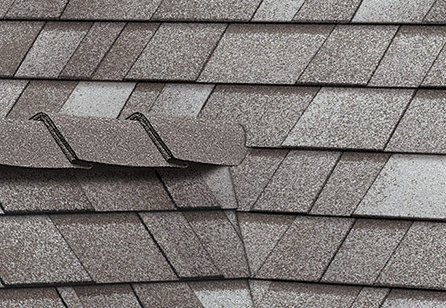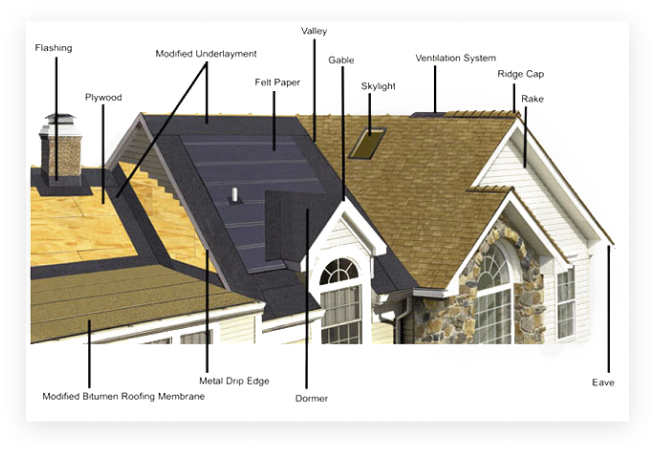Shingle Roof
An Ideal Shingle Roof
Asphalt roof shingles are most common roofing material for North American residential properties. Modern manufacturers use a fiberglass mat instead of using felt. This gives better tear and fire resistance.
Generally speaking, new shingled roofs should last upwards of 20+ years. However, many factors, such as proper installation, climate, and ventilation, impact the life of your roof.
Even if your roof shows signs of the symptoms mentioned above, you may not need a total roof replacement. A trusted roofing professional can give your roof a thorough examination and let you know if you are in need of Guide to Asphalt Shingles.

Alpha Roofing Canada – the Best Shingle Roof Contractors In Toronto
Anatomy Of An Shingle
Anatomy Of An Asphalt Shingle
The life expectancy of asphalt shingles is based on the performance of three components, and their ability to resist weathering. Made from petroleum, asphalt contains oils that make asphalt shingles easy to work with and effective at protecting your roof and home. As time goes on, these oils come to the surface and are weathered away by the elements. It’s this weathering process that ages a shingle.


Reinforcement
Asphalt shingles start out with either an asphalt-saturated organic felt, or a fiberglass mat. This reinforcement is the structural base of the shingle, to which the other raw materials (asphalt and granules) are applied. In order for asphalt shingles to provide protection, the reinforcement must resist tearing, warping and shrinkage when applied on stable, wellventilated decks.
Asphalt
During shingle manufacturing, the reinforcement is coated with asphalt to provide the water-resistant layer that protects the felt and your roof from the elements. The thickness of this layer of asphalt determines the weight of the shingle. Many believe that the heavier the shingle the greater the protection offered to your roof and home. This factor is only one of many that determines the life expectancy of your roof.
Granules
A layer of granules is pressed into the surface of the asphalt. The granules protect the layer of asphalt from the ultraviolet radiation from the sun. Without this layer of protection, the asphalt layer would quickly deteriorate.
